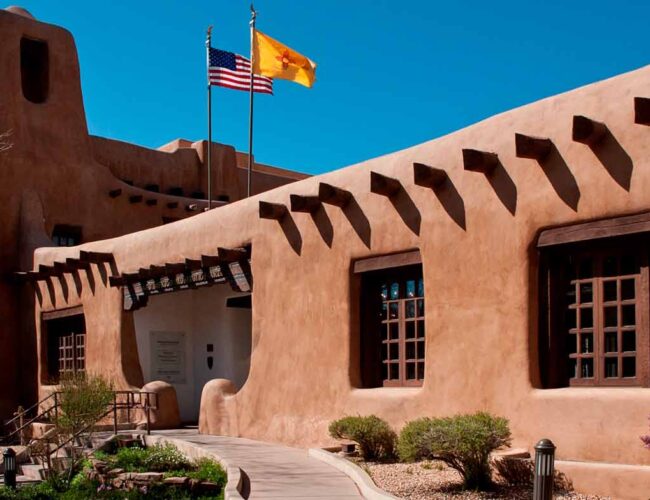Doña Teresa Confronts the Spanish Inquisition
BY FRANCES LEVINE
Summer, especially those without the cooling monsoon rains, can be long and hot in New Mexico. The sun sears your skin, and the dirt beneath your feet can scorch right through the soles of your shoes. For centuries it has been the time of year when native peoples dance and pray devoutly for rain, and when farmers and ranchers of other cultures do the same, following their own traditions.
It is not a time of year for wasted effort or frivolous undertakings. So it must have been tense and yet transfixing during the summer of 1662, when Santa Fe’s fragile Spanish settlement was sundered by the arrest of the governor, his wife, and several of his supporters by officials of the Holy Office of the Inquisition. It was not simply a difference of opinion on religious matters that led to their arrest. It was a power struggle between civil and ecclesiastical leaders over the control of the colony. Their differences arose, in part, over the appropriation and control of native peoples’ land and labor, and the place of holy obligations amid the practical concerns of supporting the colony. Many Spanish officials and colonists still held grandiose expectations of riches that might be hidden in the parched landscape of this frontier. For much of the seventeenth century the balance of power between governors and clerics was tenuous even in the best of times. During the term of Governor Bernardo López de Mendizábal (1659–62), the conflicts between church and state reached an unprecedented level of acrimony and swept through Santa Fe.
Santa Fe was the only official colonial settlement, or villa, in northern New Spain, and even there the population was small. Only about one hundred or so Spanish-speaking people—government officials, soldiers, settlers, and clergy—were living there in some forty houses, the casas reales, and the church convento. Factions were intimate and feuds threatening. Some two hundred native people then living in Santa Fe and serving in the churches, households, and governor’s residence must have been aware of the gathering storm, as well. It must have been obvious that this fragile outpost could fail. In the summer of 1662 intrigues that had been building for at least two years reached a frenzy in the colonial capital, the far northern frontier outpost of New Spain.
The governor and his wife, Teresa Aguilera y Roche, were among a small group of citizens arrested by local officials of the Holy Office of the Inquisition on charges of practicing Jewish rituals in secret; they had been accused by the Santa Fe clergy and their neighbors, as well as by their household staff. The first to be arrested were four of the governor’s closest advisors, all of them military officials: Captain Nicolás de Aguilar, Sergeant Major Diego Romero, Sergeant Major Francisco Gómez Robledo, and Captain Cristóbal de Anaya Almazán. Each accusation was no small matter. It would become a matter of life or death for the accused. Not even the governor or Doña Teresa would be spared if they were found guilty.
Doña Teresa Confronts the Spanish Inquisition: A Seventeenth-Century New Mexican Drama will be published by the University of Oklahoma Press in June 2016.

